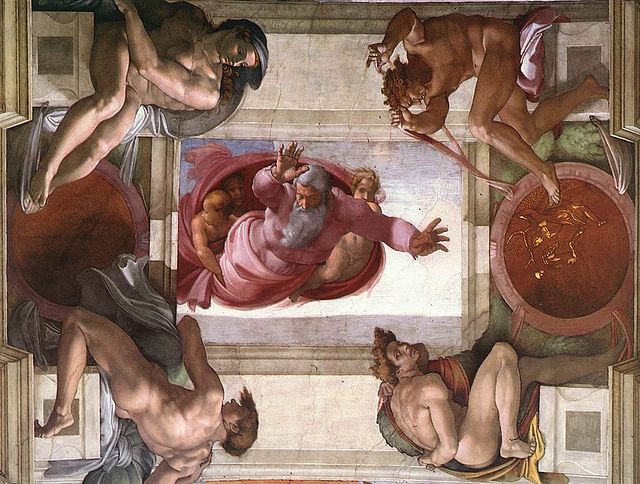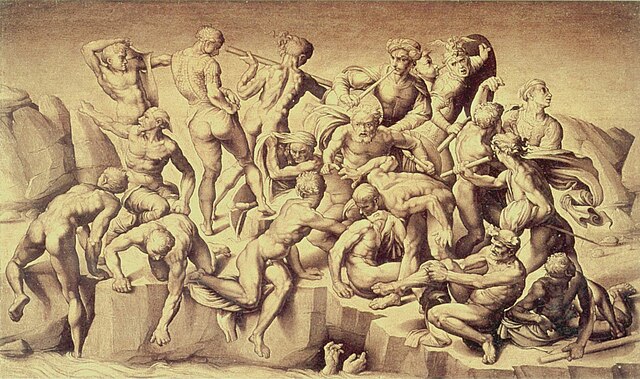Taddeo Zuccaro was an Italian painter, one of the most popular members of the Roman mannerist school.
Crocifissione, Cappella Mattei, Santa Maria della Consolazione, Rome (1556)
Royal Entry of Emperor Charles V, Francis I of France, and Alessandro Cardinal Farnese into Paris, Villa Farnese (1559).
The tomb of Taddeo and Federico Zuccaro in The Pantheon in Rome, Italy
Mannerism is a style in European art that emerged in the later years of the Italian High Renaissance around 1520, spreading by about 1530 and lasting until about the end of the 16th century in Italy, when the Baroque style largely replaced it. Northern Mannerism continued into the early 17th century.
In Parmigianino's Madonna with the Long Neck (1534–1540), Mannerism makes itself known by elongated proportions, highly stylized poses, and lack of clear perspective.
Mannerism role-model: Laocoön and His Sons, an ancient sculpture, rediscovered in 1506; now in the Vatican Museums. The artists of Mannerism greatly admired this piece of sculpture.
Collected figures, ignudi, from Michelangelo's Sistine Chapel ceiling
Copy after lost original, Michelangelo's Battaglia di Cascina, by Bastiano da Sangallo, originally intended by Michelangelo to compete with Leonardo's entry for the same commission







